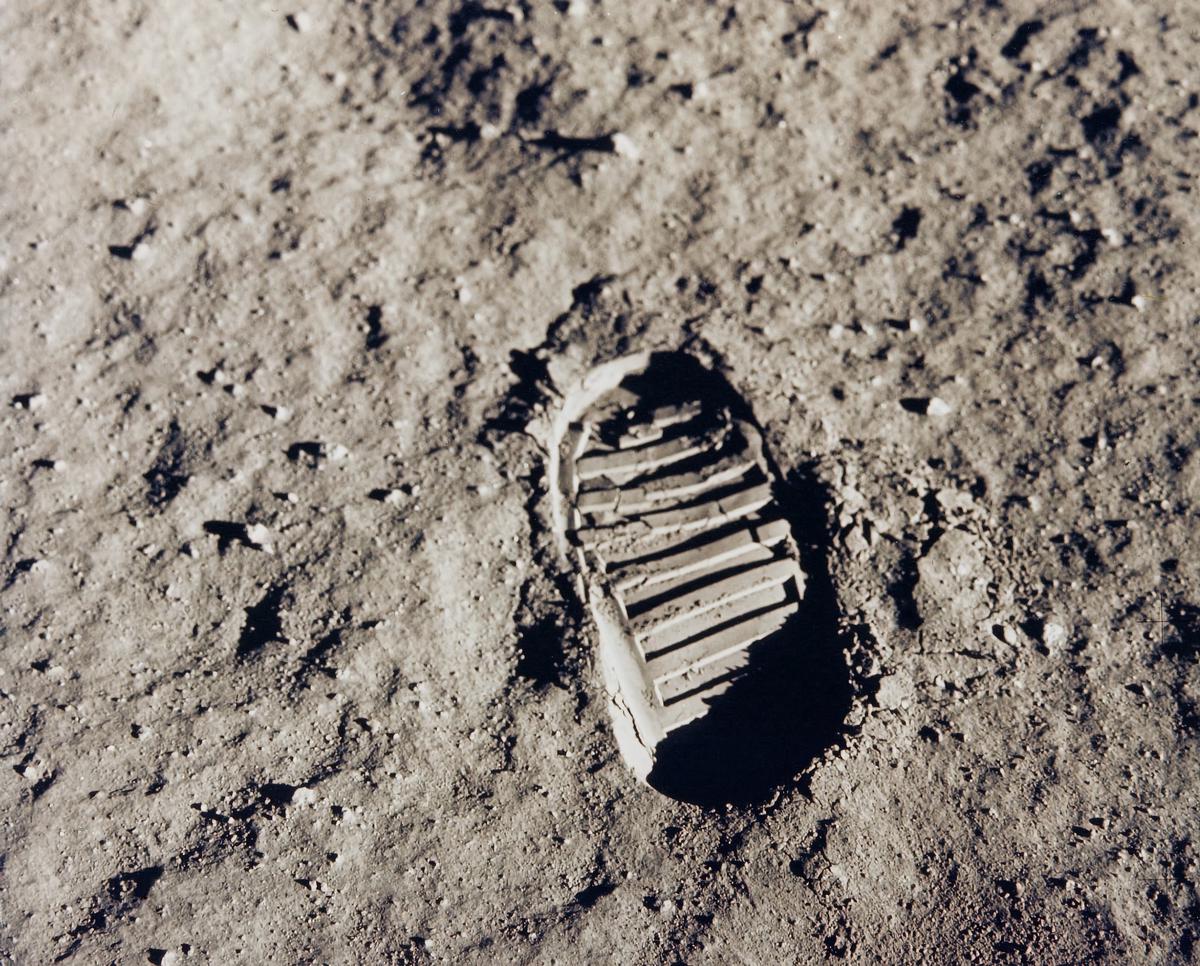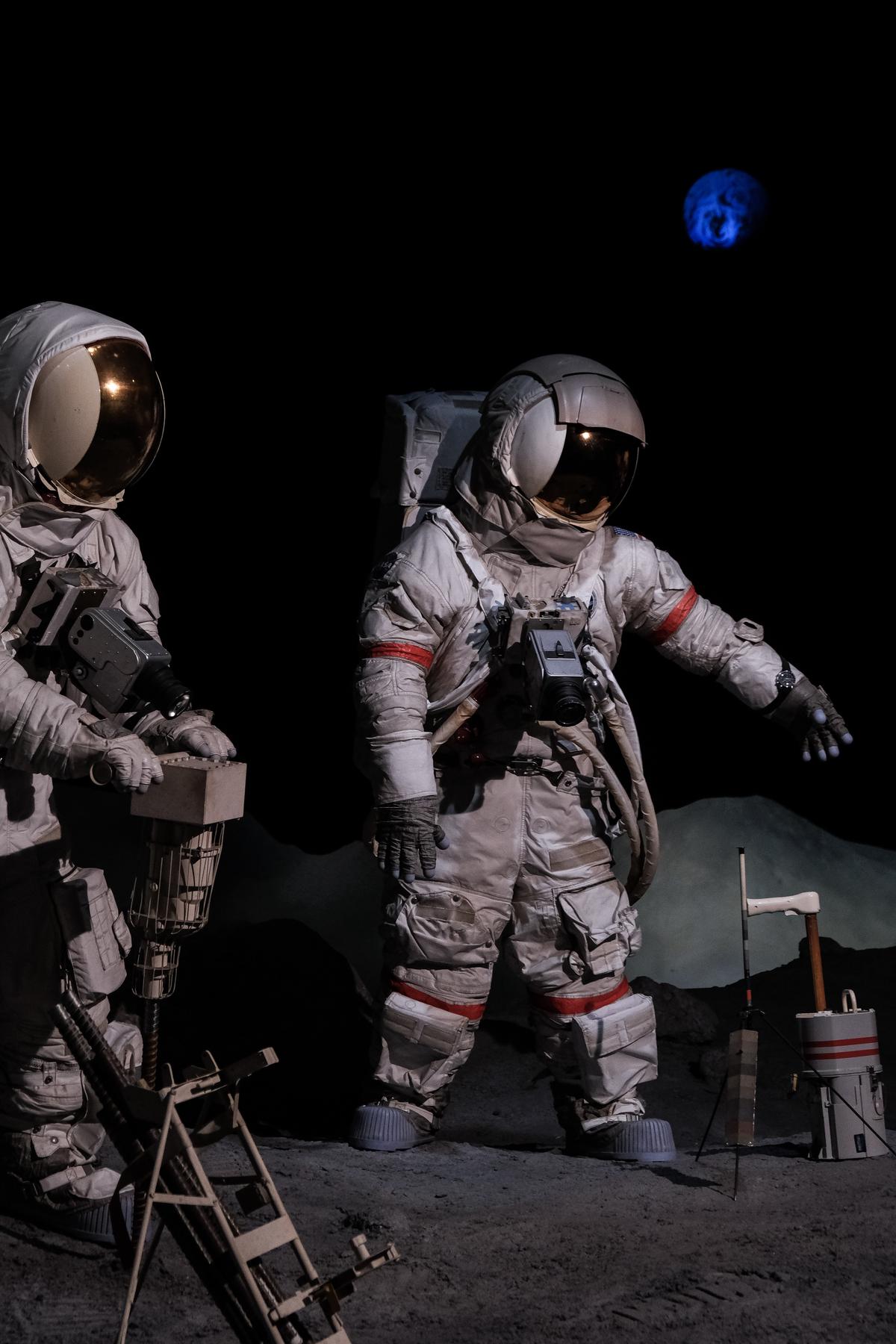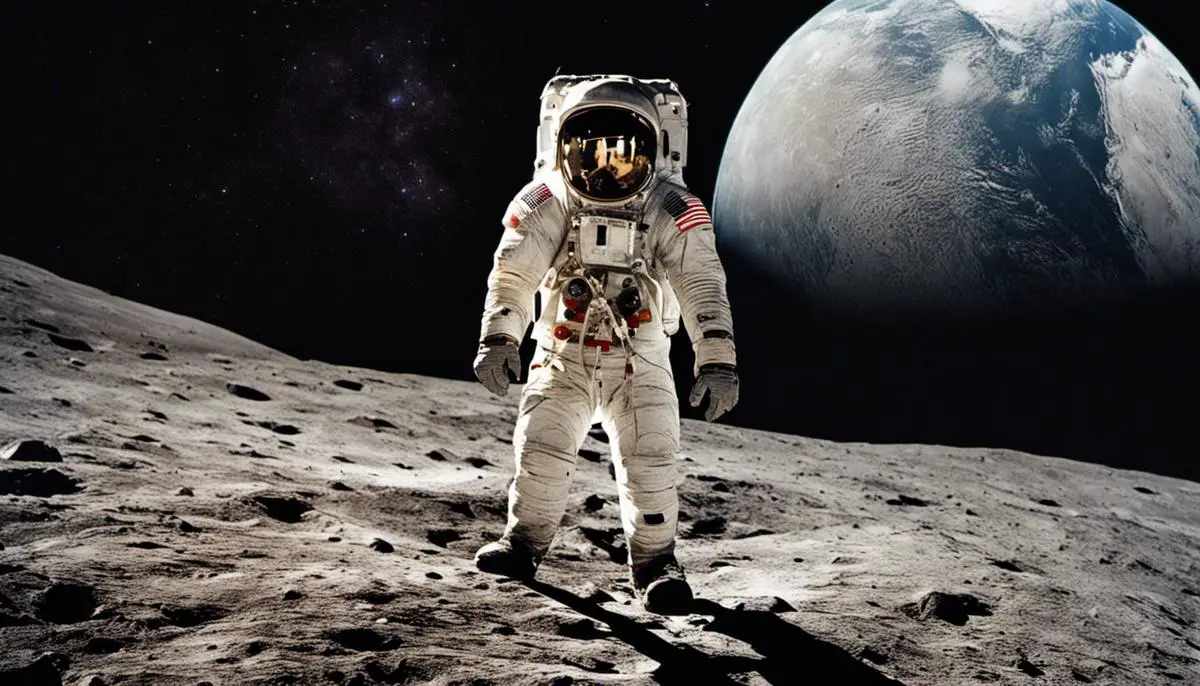The immensity of the cosmos has fascinated mankind for centuries, yet it was not until the Apollo missions of the 20th century where humanity truly seized the chance to uncover its secrets. These monumental undertakings, emblematic of human daring and innovation, were more than just scientific endeavors; they were a testament to United States national ambition and a counter to the shadow cast by the Cold War. The Apollo program emerged as a potent geopolitical tool, a symbol of American preeminence, and a wellspring of remarkable technological advancements, profoundly shaping U.S. and global space policy. This exploration seeks to critically examine the enduring influence of the Apollo missions on space policy, from its early inception up to contemporary trends.
Contents
The Apollo Program and Early Space Policy Influences
Apollo Program Objectives and Successes
The Apollo Program, initiated by the National Aeronautics and Space Administration (NASA) in the early 1960s, was a significant undertaking aimed at achieving a national goal set by President John F. Kennedy—to land a man on the moon and return him safely to Earth before the decade’s end. The program was a remarkable achievement that not only delivered on its mission but also advanced technology, deepened humanity’s understanding of the moon, and spurred international respect and prestige for the United States.
Public and International Reception of Apollo Missions
Just as the world watched as Neil Armstrong took his small step, so did they witness each progress and setback of the Apollo Program. Initial public interest in the missions was substantial, driven by a combination of awe at the technological achievement and fear of the unknown. However, public opinion varied throughout the program, influenced by various factors including the nation’s political climate, the program’s high cost, and the tragic Apollo 1 fire. International reception too was mixed—although the moon landing was universally celebrated, geopolitical tension imbued the missions with an undertone of Cold War rivalry.
Impact on Early American Space Policies
The successes of the Apollo missions were instrumental in shaping early American space policies. They solidified the United States’ position as a leader in space exploration and established NASA’s role in pushing the frontier of human knowledge. However, the aftermath of the Apollo missions also led to a reevaluation of America’s approach to space policy. The cost and scope of the Apollo Program had been massive, prompting discussion of more achievable, less risky endeavors that could maximize returns on investment in space exploration—a shift towards satellite applications, robotic exploration, and international cooperation.
Pivotal Events: Apollo 8 and Apollo 11
Two of the most significant moments in the Apollo Program—and indeed, in human history—were the Apollo 8 and Apollo 11 missions. Apollo 8, the first human voyage to orbit the moon, showcased the feasibility of moon-bound human spaceflight and captured imaginations worldwide with its famous Earthrise photo.
Apollo 11, the culmination of the Apollo Program, marked the first time humans landed and walked on the moon. This monumental achievement garnered enormous international attention and prestige, significantly influencing the direction of space policy in the United States and worldwide.
The Apollo missions had a profound impact on national space policies, marking a shift from individual nation lead in space exploration during the Apollo era to collaborative international efforts in current times. This change triggered a new age in space exploration and research.

The International Impact and Perception of the Apollo Missions
The Intersection of Geopolitics and Space Policy
Running from 1961 to 1972, the Apollo missions coincided with the peak of the Cold War between the United States and the Soviet Union. The overarching geopolitical climate played a significant role in motivating the Apollo program and heavily influenced the space policies that were established. The space race symbolized a battlefield for diplomatic and technological advancements, with both superpowers striving to proclaim their prowess. During this period, U.S. space policy was primarily centered around the goal of landing on the moon before the Soviets, as a part of their strategic orientation on the global stage.
The Apollo Missions and the Stoking of International Competition
The Apollo missions were instrumental in stoking international competition, and changed the political and strategic landscape of space exploration. While the Soviet Union was the first to launch a satellite and send a man into space, America’s Apollo program was a grandiose and more ambitious project aiming to send humans to the moon. The success of the Apollo missions signalled a major victory for the United States in the Space Race, underlining their technological superiority and causing a shift in global perception towards the U.S.
The Changing Global Perception
The global perception of the U.S. after the success of the Apollo missions drastically enhanced their international standing. Landing humans on the moon was a feat that no other nation had accomplished, or has accomplished since. This achievement bolstered America’s reputation globally and shifted the balance of power in the Space Race towards the United States. The Apollo missions served as a technological demonstration and showed the prowess and potential of U.S. space endeavors.
Impact on Foreign Policy and International Cooperation
The Apollo moon landing in 1969 did not just signify a major victory for America—it also greatly influenced foreign policies regarding space exploration. For instance, the Soviet space program made a strategic decision to focus on near-earth orbit activities immediately after the Apollo moon landing, reinforcing the Outer Space Treaty of 1967 that prohibited the militarization of space.
In terms of international cooperation, the Apollo-Soyuz Test Project, which took place just a few years after the last Apollo mission, marked the first international human spaceflight mission. It was a symbol of thawing Cold War tensions and paved the way for future cooperative endeavors such as the International Space Station. Despite the competition, the Apollo missions ultimately ushered in an era of international cooperation in space policy and research.
Influence of Apollo Missions on Modern Space Policies
The Apollo missions launched by NASA from 1961 to 1972 brought significant changes to national approaches towards space policies. Witnessing the power and potential of space technology, countries worldwide understood its value beyond just scientific exploration. It also held considerable clout for geopolitical dominance. Their successes and missteps have significantly shaped our current space policies which emphasize global collaboration alongside peaceful space exploration. These also seek to retain superiority in space technology. Thus, the chessboard of competition and cooperation, national interests versus global teamwork, is a direct echo of the Apollo missions’ enduring legacy.

Technological Advancements from the Apollo Missions and Policy Effects
Technological Advancements Stemming from Apollo Missions
Discussing the Apollo missions mandates an acknowledgement of the technological leaps these undertakings fostered. The Apollo program signified more than a collection of missions. It symbolized a period of enormous technological growth, ushering humanity’s first footsteps into the endless outskirts of outer space. These strides in technology have initiated ripple effects, touching and influencing numerous sectors to this day.
Technologies Leveraged Industrially
The Apollo missions necessitated the design and creation of an array of new technologies that have since been incorporated into industrial applications. The use of composite materials, for example, gained traction during the Apollo missions. These materials, stronger and lighter than traditional materials, have since been utilized in industries ranging from aerospace to construction. These materials’ exceptional durability and lightness are vital in improving efficiency, safety, and cost-effectiveness. Digital fly-by-wire technology, another product of the Apollo program, has become instrumental in airborne vehicles and has become standard in modern passenger and military aircraft.
Military Applications
The military also took advantage of the advancements made during the Apollo missions. The development of satellite technology and the ability to launch these satellites into orbit brought about major changes in military strategy and tactics. The satellites provided the ability to capture image intelligence from space, enabling greater situational awareness and strategic planning. The Global Positioning System (GPS), a direct offshoot of space exploration technology, revolutionized navigation and positional accuracy for military operations.
Incorporation in Daily Life
The applications of the Apollo Mission technologies aren’t limited to industrial or military usage. Many have found their way into daily life, shaping how ordinary people live and work. The integrated circuit, initially developed for the Apollo Guidance Computer, spawned the digital revolution, leading to personal computers, smartphones, and the internet. Memory foam, cordless tools, and freeze-dried food, all Apollo-era developments, are now commonplace household items.
Shaping Space Policies
Not merely delivery platforms for human achievements, the Apollo missions also led to significant policy developments. Recognizing the implications of space exploration, the Outer Space Treaty was established in 1967, promoting the peaceful use of outer space. It cemented non-weaponization of space, essentially prohibiting any nation from claiming extraterrestrial territories.
Furthermore, the Apollo missions set precedence for international collaboration in space exploration. Apollo-Soyuz Test Project in 1975, the first joint US-Soviet mission, laid the groundwork for future international projects such as the International Space Station.
The Evolution of Space Policy: An Apollo Legacy
Rooted in the foundational work of the Apollo missions, space policy and exploration have continuously evolved with contributions from government bodies, private organizations, and international entities. This ongoing evolution is fueled by technological advancements and revisions to space policies, leading to new frontiers being charted. The Artemis missions, designed to carry humans back to the moon, epitomize the long-lasting influence of the Apollo missions, underlining their role as the cornerstone of modern space exploration.

Photo by joehan330 on Unsplash
Long-term Impact of Apollo Missions on Contemporary Space Policy
Setting the Space Exploration Trajectory: The Apollo Missions
The Apollo missions in the 1960s served as a pivotal point in the history of not just the United States, but the world as a whole. With notable accomplishments like Apollo 11 landing the first man on the moon, these missions endorsed the practicability of human space exploration, thus emphasizing it as a tangible and crucial objective for global nations. The Apollo missions essentially extended humanity’s perceived horizons, inciting a worldwide inclination towards space exploration and scientific enlightenment. Following the Apollo era, numerous countries have made strides in building or improving their own space programs, highlighting the far-reaching implications of these pioneering missions.
Shift Towards Unmanned Missions
Beyond inspiring exploration, the Apollo missions also influenced NASA’s transition towards unmanned missions. The high risk to astronaut’s safety during the high-profile Apollo 13 incident created an impetus towards developing unmanned missions. With advancements in technology and robotics, NASA started augmenting its focus on robotics missions to Mars, asteroids, and the outer planets. Unmanned missions were viewed as more cost-effective, less risky, and capable of executing long-duration missions, influencing space policy towards preferring unmanned missions for exploring farther reaches of our solar system and beyond.
Impacts on Commercialization and Privatization of Space
The Apollo missions also initiated the trend towards the commercialization and privatization of space. It was clear that the government-run Apollo program, despite its remarkable accomplishments, was expensive and unsustainable. The success of the Apollo program gave confidence to private enterprises, setting into motion a shift in policy towards encouraging commercial participation in the space sector. Companies like SpaceX, Blue Origin, and Astrobotic represent the fruits of this shift.
Furthermore, space policy began to evolve to accommodate and even encourage private sector investment, leading to regulatory changes. This pivot has realms of potential benefits – increased competitiveness, brisk innovation, and an accelerated pace of space exploration.
Laying Groundwork for International Collaboration
The Apollo missions also played a role in inaugurating the modern era of international collaboration in space. The success of the moon missions demonstrated to the world what could be achieved when resources are pooled towards a common goal. Over time, countries around the world began to see the benefits of collaboration in space exploration, leading to international ventures like the International Space Station.
The Apollo Legacy
In conclusion, the Apollo missions left an enduring imprint on space policy. The missions served as an inspiration, transforming our relationship with space from a realm of fantasy to a field of scientific exploration. By influencing the shift towards unmanned missions, instigating the commercialization and privatization of space, and creating a foundation for international collaboration, the Apollo missions have unquestionably been fundamental in shaping present-day space policy.

The legacy of the Apollo missions reverberates through the ceaseless ebb and flow of space exploration. Their profound influences are entrenched within contemporary space policy, shaping our current attitude towards space exploration and driving the audacious goals we continue to set. As we witness the emergence of private entities embarking on space missions and countries internationally racing to unlock the cosmos’s mystique, it is impossible not to recognize the strong imprints left by the Apollo missions. So, we look to the stars, just as those Apollo astronauts did over five decades ago, the universal signposts of exploration, aspiration, and the unyielding human spirit, aiming to deepen our understanding and constantly redefine the boundaries of the possible.

With a passion for unraveling the mysteries of the moon, Dr. Luna Sterling is a highly-respected astrophysicist, a dedicated lunar enthusiast, and a captivating blogger. After earning her Ph.D. in Astrophysics from the Massachusetts Institute of Technology (MIT), she served as a lead scientist and mission planner for NASA, contributing significantly to various lunar missions.
For over two decades, Luna has been at the forefront of lunar science, pushing boundaries and pioneering discoveries that have enriched our understanding of the moon’s geological history. However, it’s her infectious enthusiasm for all things lunar that truly sets her apart.
In an endeavor to bring the moon closer to everyone, Luna started her blog, “Luna’s Lens: A Closer Look at the Moon.” With this platform, she offers a unique blend of intriguing moon facts, updates on lunar missions, and personal anecdotes from her experiences in the field, all told in an engaging and accessible manner.
Luna’s unique blend of scientific expertise and warm, humorous writing style has transformed complex astrophysics into compelling narratives that captivate her audience. As a gifted communicator, she leverages her knowledge and experience to relate scientific facts to everyday life, thus making her blog a must-read for both seasoned space enthusiasts and curious newcomers.
Interactive and inviting, Luna frequently encourages reader engagement through thought-provoking discussions and a monthly ‘Ask Dr. Luna’ feature, where she personally answers questions about the moon and space exploration. A celestial storyteller at heart, Dr. Luna Sterling’s passion for the moon is as vast as the cosmos she explores, making her an invaluable beacon in the world of lunar science.
